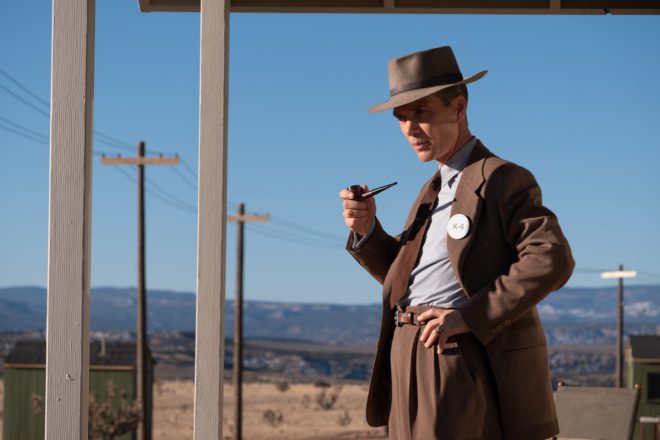By: Izumi Hasegawa August 9, 2023

I had very mixed feeling when I first heard that there was a movie being made about J. Robert Oppenheimer, the “Father of the Atomic Bomb”. However, once I heard that Christopher Nolan, a British-American filmmaker was going to direct, and understood that this wasn’t going to be a war hymn or a “Let’s go, America” type movie, and instead a story of the human drama behind the makings of the atomic bomb, I was slightly relieved.

When seeing Nolan’s films, although each scene is very impactful, in the end, I am always left wondering what message he was trying to convey. Usually, the audience relates to the main character, and is immersed into the story from their point of view. However, in many of Nolan’s films, the person we are meant to empathize with seems to change throughout the story, and yet the story is not told from a third person perspective either. Because the main characters in each scene are drawn too powerfully, in the end it becomes unclear who the story was about, what was the focus, and what the story was ultimately trying to convey. It is as if impressive scenes are strung together like patchwork to form one complete film. However, I still recognize the talent to assemble, and create something that makes the audience feel, “I have just seen something amazing”.

Even in this work, the main character is Oppenheimer, yet, on the way, the story of Louis Strauss becomes the main focus, and the story of Oppenheimer’s affair also develops to the extent that it makes you wonder, “Is this really necessary?” Despite the use of the contrasting of color and monochrome images reminiscent of Nolan’s successful Memento, the patchwork feeling was once again, undeniable.

What I found most disappointing was of the “lukewarm” portrayal of the devastation brought by the atomic bomb, as well as how shallow the depiction of Oppenheimer’s remorse was. By showing the horrifying devastation that actually happened, I believe the audience would have more easily been able to gain empathy for Oppenheimer’s subsequent activities. Because the film’s themes are neither anti-war or of peace studies, I cannot say “It should show more.” However, in order for the audience to empathize with the main character, I strongly felt that “It should have shown more”. Even though the scenes of the Red Scare were depicted so persistently…

The film’s release date in Japan has not announced yet.
There is no reason why such a major studio film, directed by Nolan, which have such strong popularity in Japan, would not be released there. With the recent simultaneous releases, the decision to not release the film at the same time as America, at the end of July seems to be made in light of the anniversary of the atomic bomb and the end of World War II in August.
The simultaneous release of the movies “Barbie” and “Oppenheimer” and their success led to the creation of the term “Barbenheimer”. I may be overthinking it, but it’s a sickly coined word. Some might say you need time to laugh it off. However, if the tragedy of the atomic bombings of Hiroshima and Nagasaki was more recent, such a leeway would not arise.

Oppenheimer
During the Red Scare, American physicist J. Robert Oppenheimer is questioned about his ties to the Communist Party. As he talks about his past, he flashes back to his days as a student and professor, and the production of the atomic bomb.
Translated from Japanese to English by Hana Umemoto
